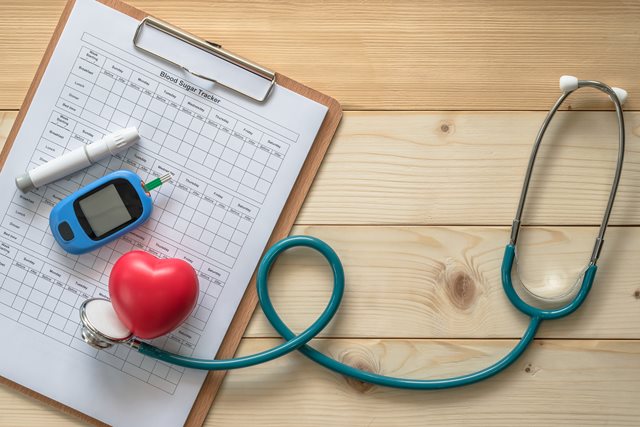Many people are puzzled about grains (think rice, breads, and cereals), especially with the conflicting media reports about their pros and cons. But the truth of the matter is, not all grains are created equal: It is important to choose the right ones. Whole grains offer various health benefits, while refined grains are stripped of valuable bran and germ, along with key nutrients such as B vitamins, iron, and fibre. While some nutrients are added back to refined grains, they still do not measure up nutritionally, which is especially important for people living with diabetes.
Check out your knowledge with this quiz and learn why whole grains are a smart choice.
1. If you have diabetes, it is best to:
a) avoid grains altogether
b) eat them only occasionally
c) include them on a regular basis
Correct answer: (c) “It’s a fallacy that people with diabetes should avoid grains,” says Joanne Lewis, a registered dietitian and certified diabetes educator, and director of healthy eating and nutrition programming at Diabetes Canada. “This misconception stems from the fact that grains contain carbohydrates, and carbohydrates raise blood sugar levels. The key is to choose healthy grains that offer health benefits, and avoid highly processed and refined grains.”
2. Refined grains are enriched with some of the nutrients that were lost during the refining process. They also contain:
a) the same amount of fibre as whole grains
b) more fibre than whole grains
c) less fibre than whole grains
Correct answer: (c) “Refined grains have much of the ‘goodness’ stripped away from them, and what’s left over offers little benefit and can send blood sugars soaring,” says Lewis.
3. Whole-grain products can help:
a) promote bowel regularity
b) lower artery-clogging cholesterol levels
c) regulate blood sugar levels
d) achieve healthy blood pressure readings
e) all of the above
Correct answer: (e)
Whole-grain foods contain a variety of beneficial nutrients, and research shows they are associated with a decreased risk of heart disease, stroke, and type 2 diabetes. For those with diabetes, choosing whole grains over refined grains can help to maintain optimum blood sugar readings.
Kelly Toups, nutrition director at Oldways, a non-profit food and nutrition organization, points to research on people who have a condition called metabolic syndrome (which boosts the risk for diabetes). The subjects in the study were randomly placed in groups that ate either whole or refined grains only. “Those who consumed whole grains, rather than the refined grains, had better blood sugar control, which was measured by insulin sensitivity and secretion following meals,” says Toups.
4. Whole grains can affect blood sugar readings differently depending on how they have been processed.
a) true
b) false
Correct answer: (a) “Choosing steel cut or rolled oats over [highly processed] instant oatmeal is an example of grains with a lower glycemic index,” says Toups. The glycemic index is a measure of how quickly a food is digested in your body; when the food takes longer to digest (meaning it has a low index), that releases a slower and steadier rate of sugar into your body. When grains are highly processed (chopped finely), they have a higher glycemic index as they are more quickly digested.
5. The main reason people do not eat whole grains is because:
a) they think whole grains taste bad
b) they do not know how to prepare them
c) whole grains take forever to cook
d) baked goods containing whole grains are heavy and dense
e) all of the above
Correct answer: (e) Many people are intimidated by whole grains, says Andrea Geary, senior editor at Cook’s Illustrated Magazine. But she encourages their use and adds, “Using whole grains instead of refined grains can make cooking and baking easier, quicker, and more foolproof.” For example, when making fried rice, white rice must be cooled before the dish is assembled, while whole-grain rice can be used while it is still hot.
If you are unfamiliar with whole-grain products, look for recipes that contain them and show how to prepare them. (Enjoy our three easy, delicious options.)
Some whole grains may take longer to cook than refined grains, so preparing larger amounts at a time and freezing the extra (in labelled portions) can be a real time-saver.
As well, since whole grains have a shorter shelf life than refined grains, proper storage is important. Store whole grains in the fridge to keep them fresh tasting. If you buy large quantities of whole-grain breads, keep the extra in the freezer.
6. You can tell whether a bread is whole grain by:
a) its colour
b) the ingredient list on the package
c) the name of the product
Correct answer: (b) It is easy to be fooled by the colour or the name of the bread. Caramel colouring can be added to the bread, which will make it darker looking, while the names of breads may make you think they are whole grain. For example, multi-grain may simply mean that there are a variety of grains included but they may all be refined. Check the ingredient list to be sure (some examples of words to look for include whole grain, whole wheat, stoneground whole grain, brown rice, and wheatberries). Also, since ingredients are listed in descending order by amount, look for products where the first ingredient is a whole grain.
7. If you are following a gluten-free diet, you should:
a) avoid all grains
b) only have small amounts of grains
c) go for the wide variety of gluten-free grains
Correct answer: (c) There are many gluten-free grains on the market these days; sorghum, quinoa, amaranth, buckwheat, and millet are just a few examples. Pure oats are gluten-free, but they may be cross-contaminated if they are grown near gluten-containing grains, so be sure to look for oats labelled as gluten-free.
Recipes
Be adventurous and experiment with grains you have not tried before. Here is a trio of recipes to get you started.
Amaranth with Peppers and Cabbage
This Latin American recipe, from the Oldways Whole Grains Council, is a great example of a gluten-free dish that everyone can enjoy. If you are not a fan of the mild heat from poblano peppers, feel free to substitute bell peppers if you prefer. If amaranth is not available, you can prepare this dish with any other whole grain (such as quinoa or buckwheat), but remember that cooking times will vary depending on what you use.
- 1 cup (250 mL) uncooked amaranth grains
- 2 cups (500 mL) water
- 2 tbsp (25 mL) extra virgin olive oil
- 2 garlic cloves, minced
- 1 green bell pepper, cored, seeded, and diced
- 1 poblano pepper, cored, seeded, and diced
- Quarter head purple cabbage, chopped into long shreds
- Salt and pepper
To cook amaranth, bring water and amaranth to a boil. Reduce heat and simmer, partially covered, for 30-35 minutes, or until amaranth is soft, swollen, and tender. Remove from heat and allow to stand for 15 minutes, with the lid still on, to swell more.
Meanwhile, heat oil in a large shallow pan. Gently fry garlic, bell pepper and poblano pepper until soft. Add cabbage, season to taste with salt and pepper, and put the lid on to cook for 5 more minutes.
Gently stir in amaranth; reheat and serve.
Makes 4 servings
Nutritional breakdown per serving: 38 g carbohydrate, 8 g protein, 10 g total fat, 2 g saturated fat, 6 g fibre, 175 mg sodium, 270 calories
Oat Groat Pilaf with Wild Mushrooms
Oat groats are the whole-grain product before it is flaked or rolled to become oat flakes or oatmeal. You can use groats as you would use barley or rice in a savoury pilaf or with vegetables in a salad. Look for groats in a natural food store.
- 3½ cups (875 mL) homemade or low-sodium chicken or vegetable broth
- 1 cup (250 mL) oat groats, rinsed
- 1 tbsp (15 mL) extra virgin olive oil
- 1 cup (250 mL) chopped onions
- 4 cups (1 L) sliced mushrooms
- Salt and freshly ground pepper
- 2 tbsp (25 mL) chopped fresh parsley
Bring broth to a boil in a medium-sized saucepan. Stir in groats; return to boil. Reduce heat, cover, and simmer for 55-60 minutes. Allow to stand for 10 minutes.
Meanwhile, heat oil in a large skillet over medium heat; add onions and sauté for 5 minutes. Add mushrooms, and continue to cook for another 10 minutes. Top groats with mushroom mixture. Season to taste with salt and pepper. Garnish with chopped parsley and serve immediately.
Makes 4-6 servings
Nutritional breakdown per each of 6 servings: 24 g carbohydrate, 8 g protein, 6 g total fat, 2 g saturated fat, 4 g fibre, 160 mg sodium, 181 calories
© Rosie Schwartz
Barley Tabbouleh
Barley is for more than just soup! Chock full of soluble fibre, it is delicious in salads and other cold dishes. This recipe is from the book Go Barley, Modern Recipes for an Ancient Grain by Pat Inglis and Linda Whitworth (Touchwood). Add the tomatoes just before serving to keep their firm texture and taste.
- 1 cup (250 mL) pot or pearl barley
- 2 cups (500 mL) water
- 1 cup (250 mL) chopped fresh parsley
- ½ cup (125 mL) chopped fresh mint
- ½ cup (125 mL) chopped green or red onion
- 1 small cucumber, coarsely chopped
- ¼ cup (50 mL) olive oil
- ¼ cup (50 mL) fresh lemon juice
- ¾ tsp (4 mL) salt
- ½ tsp (2 mL) ground cinnamon
- Freshly ground pepper, to taste
- 3 plum tomatoes, chopped
- Fresh mint leaves, for garnish
In a saucepan over high heat, combine barley and water; bring to a boil. Reduce heat to simmer; cover pan and cook for 40 minutes, then chill.
Once barley has cooled, in a large bowl, combine barley, parsley, and mint. Add onion and cucumber.
In a small bowl, whisk together olive oil, lemon juice, salt, cinnamon, and pepper; pour over barley mixture and mix well, then refrigerate for at least one hour. Shortly before serving, stir in tomatoes. Garnish with fresh mint leaves.
Makes 8 servings
Nutritional breakdown per serving: 22 g carbohydrate, 3 g protein, 7 g total fat, 1 g saturated fat, 5 g fibre, 231 mg sodium, 161 calories
(This article appeared in Diabetes Dialogue, Spring 2019)
Related Content


Tools & resources
Take charge of your health with tools and resources from Diabetes Canada, such as the glycemic index.
Get started About Tools & resources
Webinars
Learn more tips and tricks by watching one of our latest webinars.
View webinars About Webinars